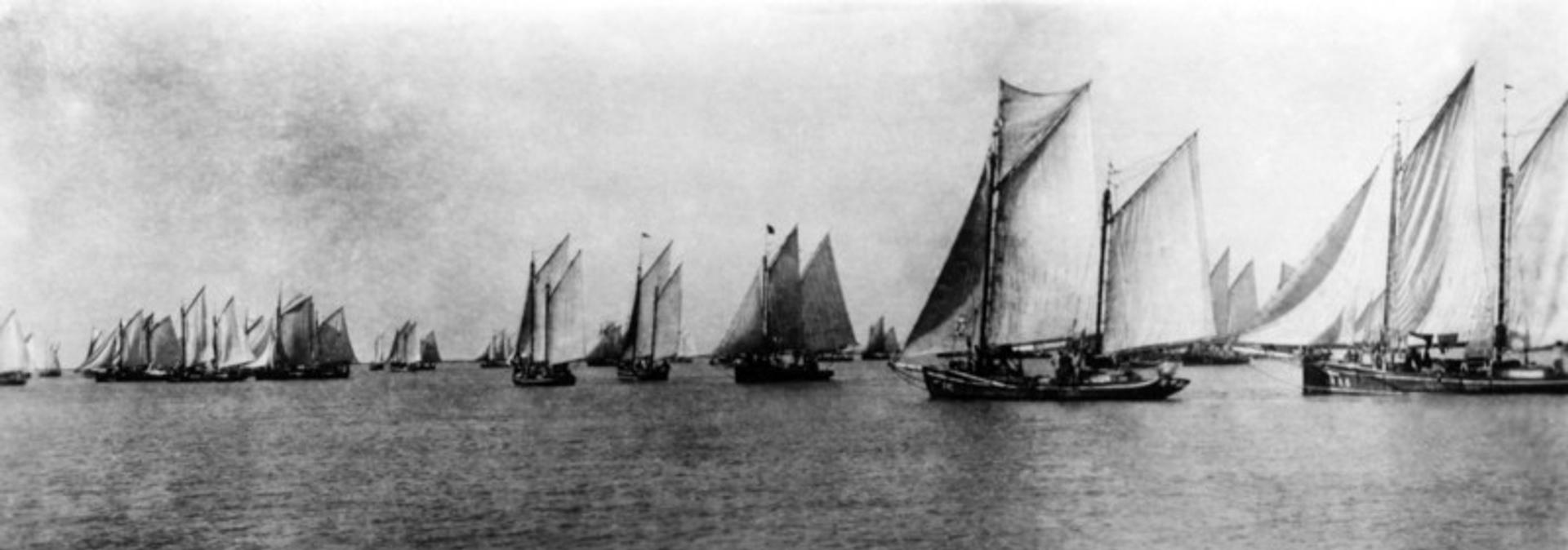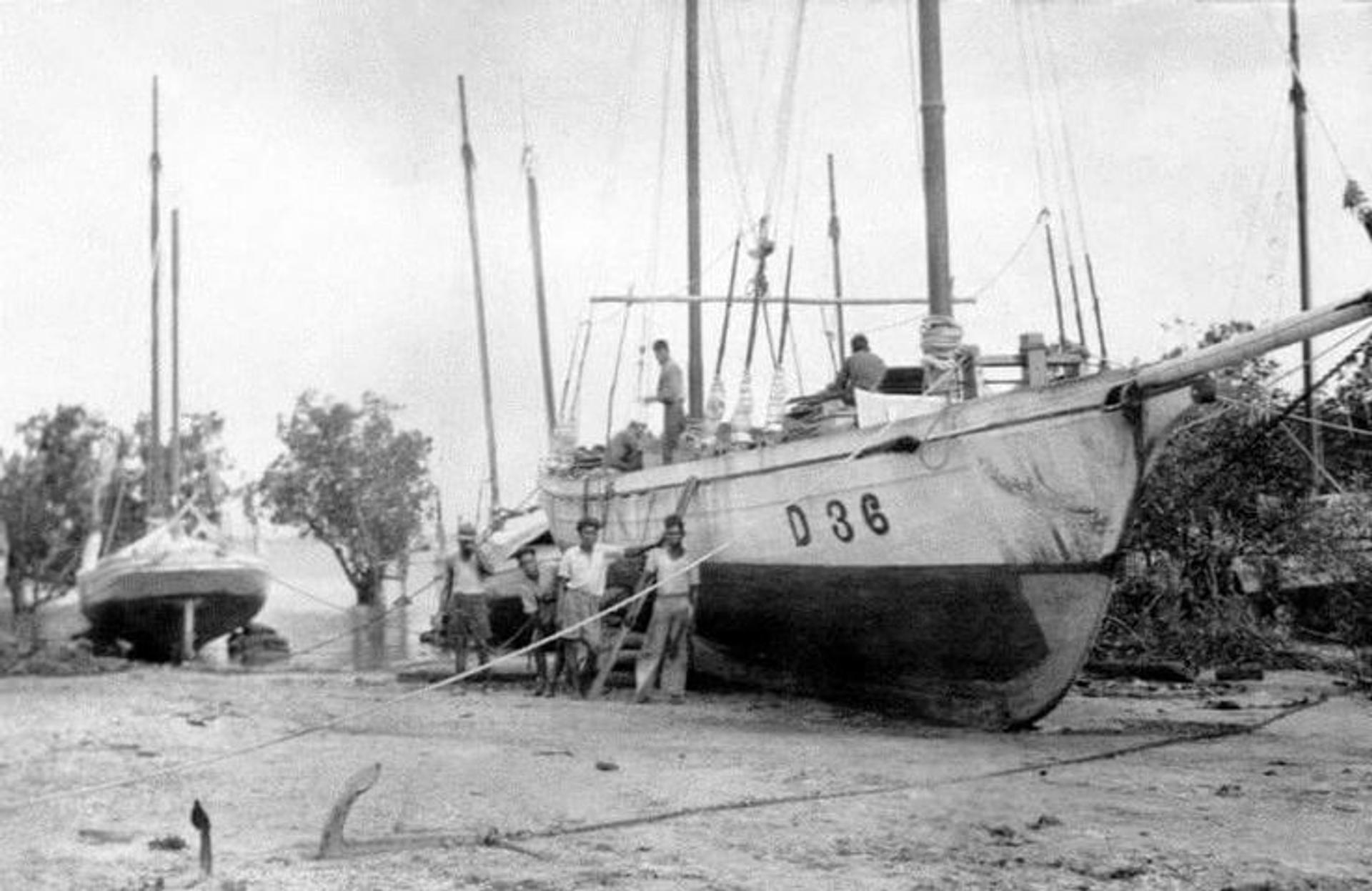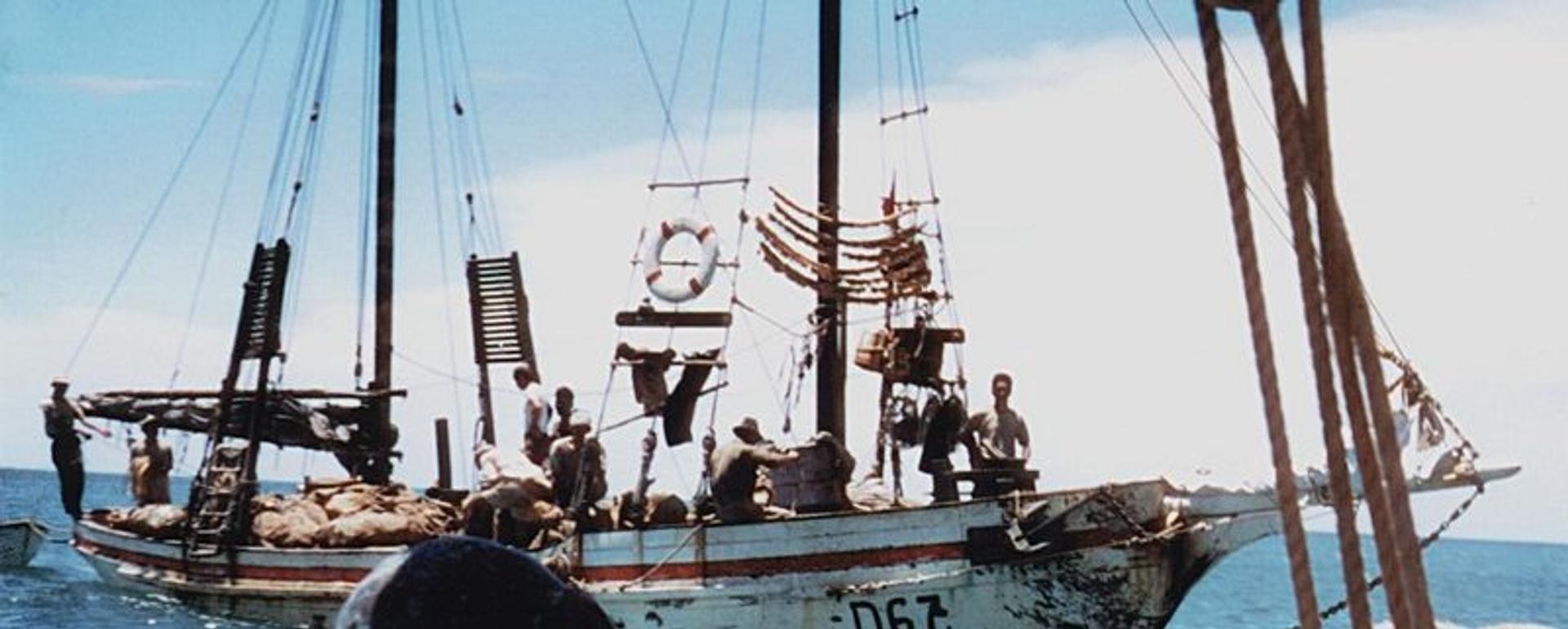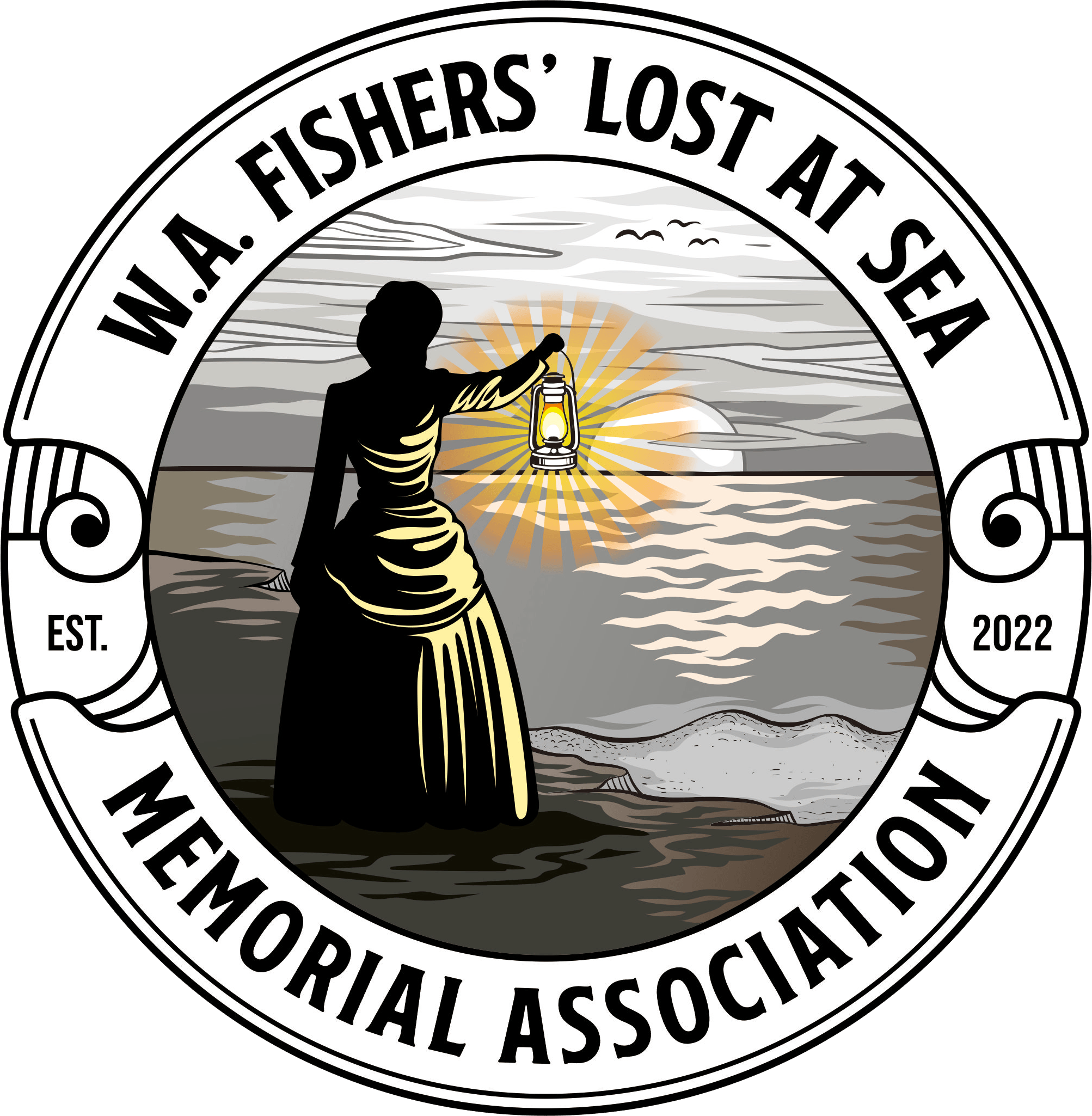Sakamoto Hatrikichi
Vessel Name: Red Bill
Sakamoto Hatrikichi
Murdered, body recovered
18 December 1904

Redbill in the fleet

Redbill

Sakamoto Hatrikichi was the diver of Redbill, a lugger belonging to a fleet with the schooner Cutty Sark. In 1901 at the age of 41 years Sakamoto demonstrated his diving skills by diving to 26 fathoms and remaining underwater for two minutes and 25 seconds. While underwater he tied ropes around a case of cargo from a wreck, which was hauled up after him. He was a respected and experienced diver.
Sakamoto was also a hero of the Chino-Japanese war. He had been wounded three times in battle. He was known as a brave intelligent man.
He was prosecuted by Australian customs as an illegal immigrant. Reportedly there were issues with his entry to Australia and his authority to work in WA.
Redbill was a 12.11 ton two masted schooner built by Chamberlain and Cooper in Fremantle in 1904. She was registered as number 11 of 1904 and her official number was 119011. Typical of the luggers of her time, Redbill measured 35.75 x 11.75 feet [10.9 x 3.6 metres]. She was built for the northwest tides, and she drew four feet [1.2 metres] of water.
Redbill was owned by a partnership of three pearlers. Captain Frederick Lee Parkes joined with his brother Herbert M Parkes and Arthur Robert Harding, both pearlers of Onslow. Captain Parkes commanded the schooner Cutty Sark as the mother boat of the fleet, and he assumed the usual title of Master.
Like most luggers with a mother boat, Redbill was commanded by the head diver on the vessel, known as the Diver in Charge. Sakamoto had held that position for two years aboard Redbill. He was responsible for the vessel, its operations, its equipment and the men aboard, and answered to the fleet’s master. His second in command was the Tender. Aboard Redbill that was Powee. He was responsible for the breathing equipment and lifeline used by the diver. It was his job to feed out the air tube and monitor it carefully, keeping the lifeline in his hands as long as the diver was in the water below. The diver and tender signalled each other via tugs on the lifeline. He was also in charge of the vessel and crew while the diver in charge was down below.
The second diver aboard Redbill was Nakata. There were also pump hands: Namba and Dollah Bin Sakara who manned the air pump making sure air passed down the air tube to the diver. They also took watch and carried out deck hand tasks. The crew usually took turns in cooking.
On 18 December 1904 when Redbill was still a new boat, the fleet was anchored in the Exmouth Gulf, working the pearling grounds there. Sarriman of the May visited Dollah bin Sakara on Redbill. The two Malay men were friends. Sarriman was accompanied by three others. They were Malaymen Boyen and Magen and Singaporian Joseph Pinto.
During his visit Sarriman ate bread belonging to Sakamoto, breaching an unwritten rule about the limited food rations granted to crew members aboard luggers. An argument broke out between Sarriman and Sakamoto which escalated quickly when Sarriman kicked Sakamoto’s head.
Nakata was on the Fly, another lugger of the fleet. He told the court that his friend Sakamoto visited him and then asked him to take him over to Redbill. Sakamoto woke Namba and got a light and then woke Dollah.
It was not long after Sarriman went on board when Nakata heard someone yell out that Sakamoto had been stabbed. Powee, the tender saw Sakamoto lying on his face, still alive. Powee helped Namba to turn Sakamoto over and they saw three wounds on Sakamoto’s body. He had been stabbed in his left hip, and there were two wounds in his chest, one of which pierced his heart. Sakamoto died within five minutes.
Powee called for a dinghy and in 10 minutes, Joseph brought a dinghy from the May approximately 15 metres away. Sarriman returned to the May. He threatened Redbill’s crew, telling him if he reported the death he would stab him. Namba waited for 15 minutes, then quietly left Redbill and reported the murder to Captain Parkes.
Powee and Namba had seen Sarriman board Rebill at 7.30pmwith a knife. At the time he did not think too much of it. All crew carried a knife for work and to cut through rope in an emergency. Malaymen wore a traditional kris in their belt.
The next morning Captain Parkes took Sarriman Bin Sally and Dollah Bin Sakara to the Onslow jetty, where they were met by Constable Pollett and taken into custody. Sakamoto’s body was taken into Onslow for an inquiry. The body was examined by Resident Magistrate and Medical Officer Dr Frost who led an inquest with a jury. Both men were transported to Fremantle to stand trial for wilful murder.
Newspapers reported the killing as a Malay against Japanese issue, but the issue was not pursued as a racial problem. It retained a high focus in all the state’s newspapers for the duration of the trial and sentencing.
On March 15, 1905, Dollah was found not guilty of the killing of Sakamoto. Sarriman was not convicted of murder, but of manslaughter. His trial continued until 21 March. He was remanded in Fremantle prison for sentencing.
The court case was complicated by the absence of Dr Frost at the trial. Government officials had determined that Onslow warranted one doctor to cover the magistrate and medical officer roles. In the case of Sakamoto’s murder they decided that to replace Dr Frost for the period of the trail and cover the costs of a locum and his travel expenses would be a waste of public money. The court took a different approach, deeming the medical evidence without Dr Frost to be flimsy and unsubstantiated.
On March 31, 1905, Sarriman Bin Sally was sentenced to five years imprisonment with hard labour in Fremantle Prison. The sentence was suspended to allow for an appeal due to lack of medical evidence at the trial. The conviction was upheld in a Full Court decision made on 6 June.
Red Bill went on to have many more lives. In 1919 she was bought by Captain Ancell Gregory, and he used her for pearling. He rebuilt her in 1929 and operated her as a trepang (beche de mer) and pearl diving boat from Darwin. During World War ll she was purchased by the navy and served as a patrol vessel out of Darwin. In 1954 Dick Sonners acquired her for pearl diving on the north coast and New Guinea. In 1978 Gerry Holmes restored her for salvage work. Then in 1988 she became a Greenpeace vessel and a training vessel. Finally in 1999 she returned to Broome as a tourist boat. Her long life ended in April 2000 when she was lost in a cyclone off the Bay of Rest in Exmouth Gulf. All her crew were rescued.
